The Battle of the Atlantic Was a Never-Ending Fight for Control of the High Seas
The Battle of the Atlantic stretched across the entirety of the Second World War, from 1939-45. The monumental engagement was about more than just naval warfare; it was crucial to the survival of Britain and the Allied forces. Control of the Atlantic sea lanes was important, as they aided in the transport of soldiers, supplies and other war materials from America to the European Theater.
German U-boats targeted Allied shipping routes in the Atlantic
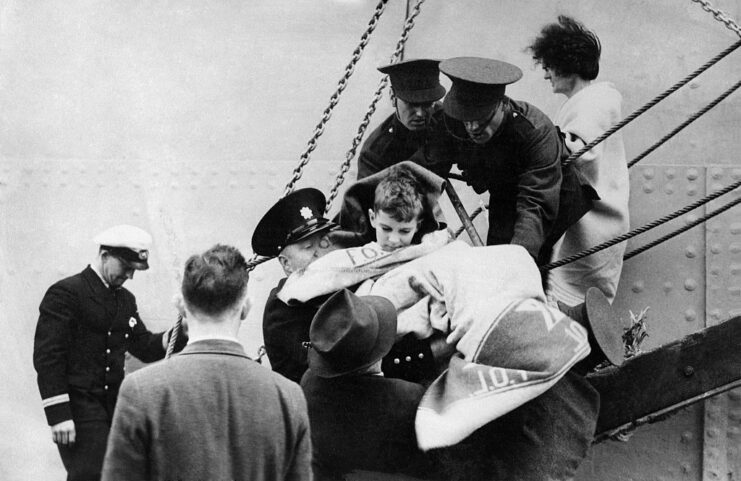
The Battle of the Atlantic commenced on September 3, 1939, a few hours after Britain formally declared war on Germany, with U-boats and “pocket battleships” already stationed in the ocean. The first shots were fired off the coast of Ireland; U-30 torpedoed the passenger ship SS Athenia, which was transiting across the Atlantic to Montreal, Quebec with over 1,400 passengers and crew onboard. Of those, 112 lost their lives.
Before long, it was Allied shipping lanes that had become the targets of the Kriegsmarine‘s attacks. It was the belief of Adm. Karl Dönitz, the commander of the U-boat fleet, that attacking these routes would greatly disrupt and prevent much-needed supplies from reaching their Allied targets – and he was correct. What’s more, the fall of France gave the fleet bases from which they could easily access the Atlantic.
Forming ‘wolf packs’ to attack Allied shipping
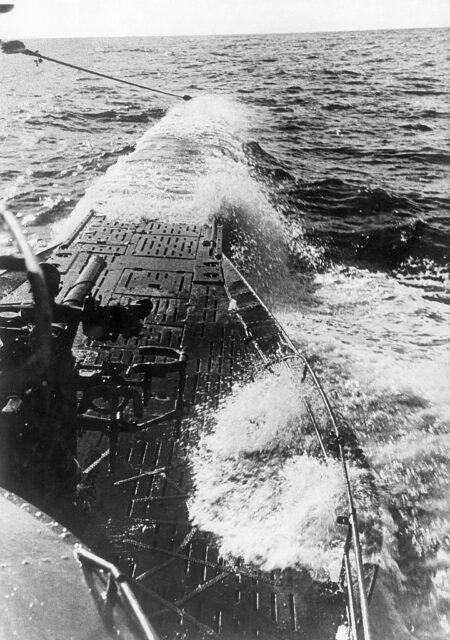
The U-boats traveled beneath the ocean’s waves in groups known as “wolf packs,” and they were a formidable force when paired with Focke-Wulf Fw 200 Condor reconnaissance aircraft.
The Allies, initially caught off guard by the Germans’ intensity and effectiveness, suffered heavy losses that threatened Britain’s capacity to sustain the war effort. Even the United States wasn’t immune from these attacks, with enemy vessels traveling to the East Coast and laying sea mines along shipping lanes in the days and months following the Japanese attack on Pearl Harbor.
By the summer of 1940, the Kriegsmarine was supplementing the U-boats’ strength with surface ships. This period saw some of the highest tonnages of Allied vessel losses, heightening the urgency for effective countermeasures.
Radar and sonar greatly changed the Battle of the Atlantic
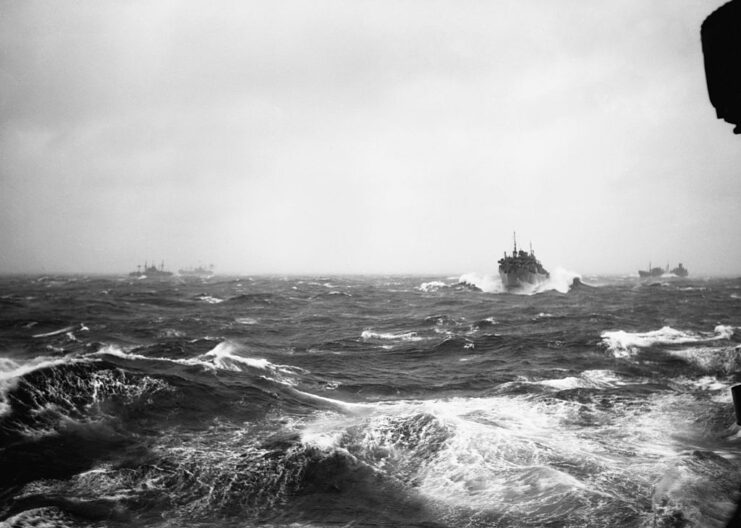
As the Battle of the Atlantic wore on, technological innovations began to shift the balance; Allied development and use of radar and sonar (ASDIC) marked a significant turning point. These technologies allowed for the early detection of U-boats, drastically reducing their effectiveness and giving Allied convoys a chance for survival.
The enhancement of radar and sonar capabilities, coupled with their integration into Allied naval and air units, allowed for more protective coverage over convoys traversing the Atlantic. This technological edge was crucial in mitigating the U-boat threat and ensuring the safe passage of vital supplies and personnel across the vast ocean.
Additionally, surface ships began using high-frequency direction-finding (HF/DF), which allowed them to take advantage of radio communication between vessels in a wolf pack.
That being said, the Germans were also improving their own technology. By the final years of World War II, the majority of U-boats were able to travel much longer distances, meaning they could remained submerged for longer. On top of this, they were equipped with a new type of torpedo that used the sound of a ship’s propellor to hone in on its target.
Closing the Mid-Atlantic Gap
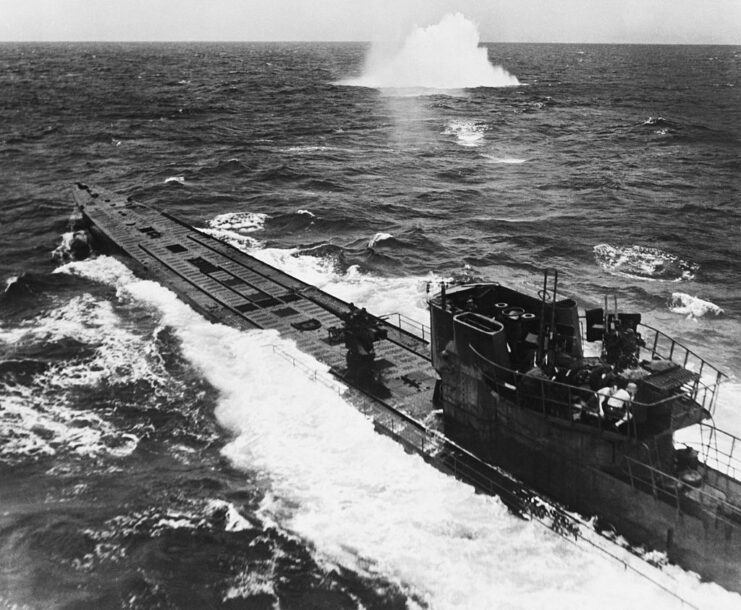
Addressing the challenge of the Mid-Atlantic Gap – the part of the ocean that lay beyond the reach of land-based aircraft – was critical for the Allies. The introduction of long-range bombers and fighters, notably the Consolidated Liberator GR.I, was instrumental in closing this and significantly bolstering the Allies’ ability to protect convoys midway across the Atlantic, where they were most vulnerable to U-boat torpedoes.
The deployment of these long-range bombers not only provided much-needed air cover, but also helped enhance reconnaissance capabilities, allowing for the earlier detection of enemy vessels. This was crucial in reducing the overall losses of merchant ships while maintaining the continuous flow of essential supplies.
Deciphering the German Enigma
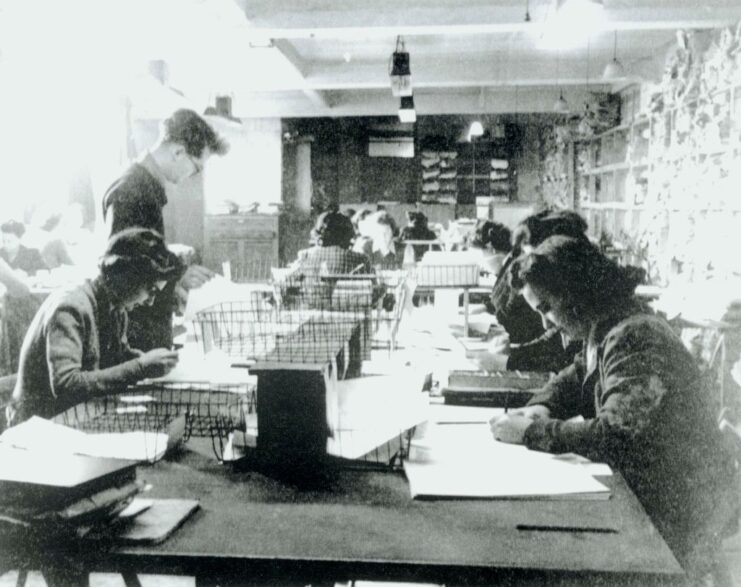
Allied Intelligence efforts – in particular, breaking the German Enigma – played a key role in the Battle of the Atlantic. U-boats communicated with their headquarters via radio messages that were encrypted through the use of an Enigma cipher machine and, for a time, it was believed to be unbreakable. However, the British were working to break this code, with much of the work taking place at Bletchley Park.
While largely known for being one of Alan Turing‘s stomping grounds, the site, run by the Government Code and cypher School, was primarily manned by women, who spent their time breaking the Enigma and Lorenz codes. Their work was supplemented by the capture of Engima rotors and codebooks from lost U-boats, as well as the “bombe,” which helped the codebreakers program the Engima cipher machine.
The ability to intercept and decipher German communications provided the Allies with invaluable insights into U-boat positions and intentions, allowing for more effective counter-strategies. This breakthrough in military intelligence was a major factor in the eventual Allied success in the battle.
The deciphering of the Engima code not only allowed them to anticipate and counter German operations, but also saved countless lives and resources. This intelligence coup is often credited as one of the most significant factors that led to the turning of the tide in the Battle of the Atlantic.
A strategy of mutual protection
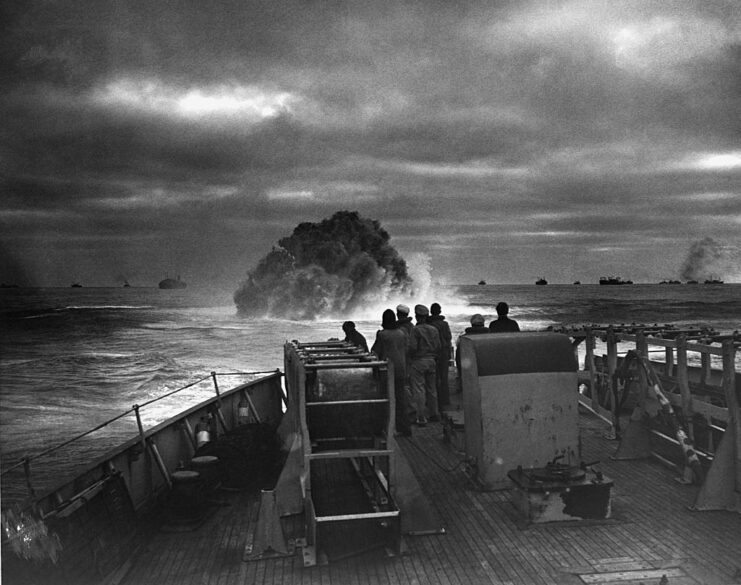
The implementation of the convoy system was a strategic response to the U-boat threat that proved to be a game-changer in the Battle of the Atlantic. By grouping ships together and providing them with naval and air escorts, the Allies greatly enhanced the protection of their maritime assets. This system not only safeguarded merchant vessels, but also created tactical challenges for German U-boats, which now faced more robust and coordinated defenses.
On top of this, the Royal Navy became more aggressive in its approach to warfare in the Atlantic, using its anti-submarine ships to form hunter groups tasked with protecting convoys. They were equipped with a variety of weapons, including the Hedgehog anti-submarine mortar, which fired contact-fused bombs.
The effectiveness of the convoy system was reflected in the reduced number of Allied losses and the increased difficulty for U-boats to inflict significant damage.
How did the Battle of the Atlantic impact the Home Front?
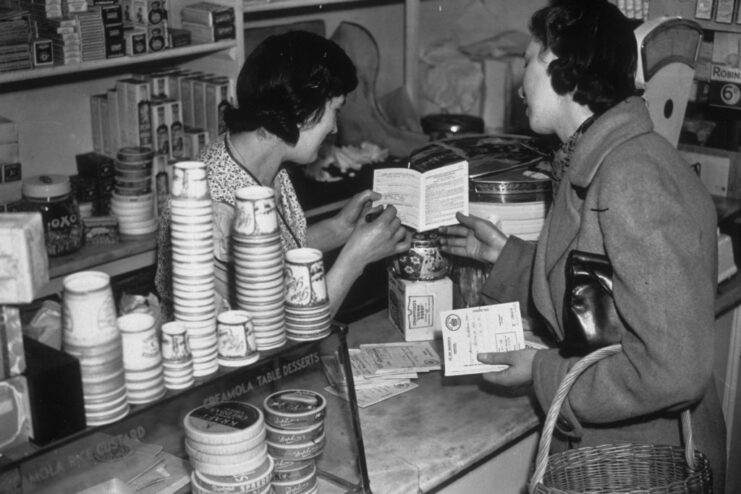
The Battle of the Atlantic had a profound impact on the home front, especially in Britain, where the war effort required significant civilian support. Rationing became a necessary measure, due to disruptions in supply lines caused by German naval warfare. This period saw the British public adapt to shortages and contribute to the effort through various means, such as increased production in shipyards and factories.
The mobilization of the civilian population was crucial, not only in terms of material production, but also in maintaining morale during the challenging times of the Second World War. The collective effort on the Home Front was instrumental in supporting frontline activities and underscored the interconnectedness of all aspects of the war effort.
Defeating the German U-boat threat in the Atlantic
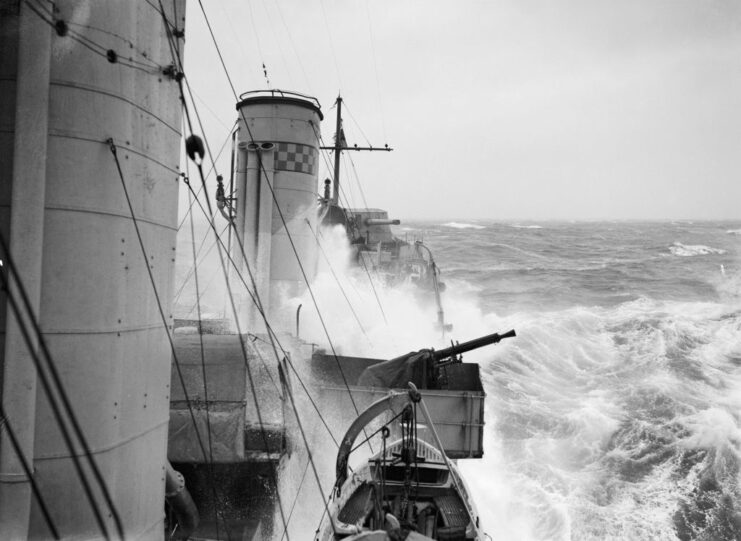
By 1943, the combined impact of technological advancements, improved tactics, and increased Allied production of warships and aircraft had effectively neutralized the German U-boat threat. This shift allowed the Allies to maintain dominance in the Atlantic, ensuring the unimpeded flow of supplies crucial for the continuation – and eventual success – of operations in Europe, such as the D-Day landings on June 6, 1944.
While the Allies were ultimately successful in defeating the Germans in the Atlantic, their victory wasn’t without its losses. Over 70,000 sailors, airmen and merchant mariners perished. In comparison, the Germans suffered 30,000 personnel losses, which amounted to three-quarters of the country’s U-boat fleet.
In terms of vessels lost, 3,500 Allied merchant ships and 175 warships were sunk, with the former amounting to 14.5 million gross tons – an incredible amount of supplies lost to the ocean’s murky depths.
More from us: The Battle of France Saw a European Power Fall in Just Six Weeks
The Battle of the Atlantic also saw many Allied navies grow, in terms of their strength, with the most notable being the Canadian Navy, which came to encompass more than 400 ships and 96,000 personnel, 6,000 of which were women in the Women’s Royal Canadian Navy Service.
The post The Battle of the Atlantic Was a Never-Ending Fight for Control of the High Seas appeared first on warhistoryonline.
The Battle of the Atlantic Was a Never-Ending Fight for Control of the High Seas
Philippines Truth
Post a Comment
0 Comments